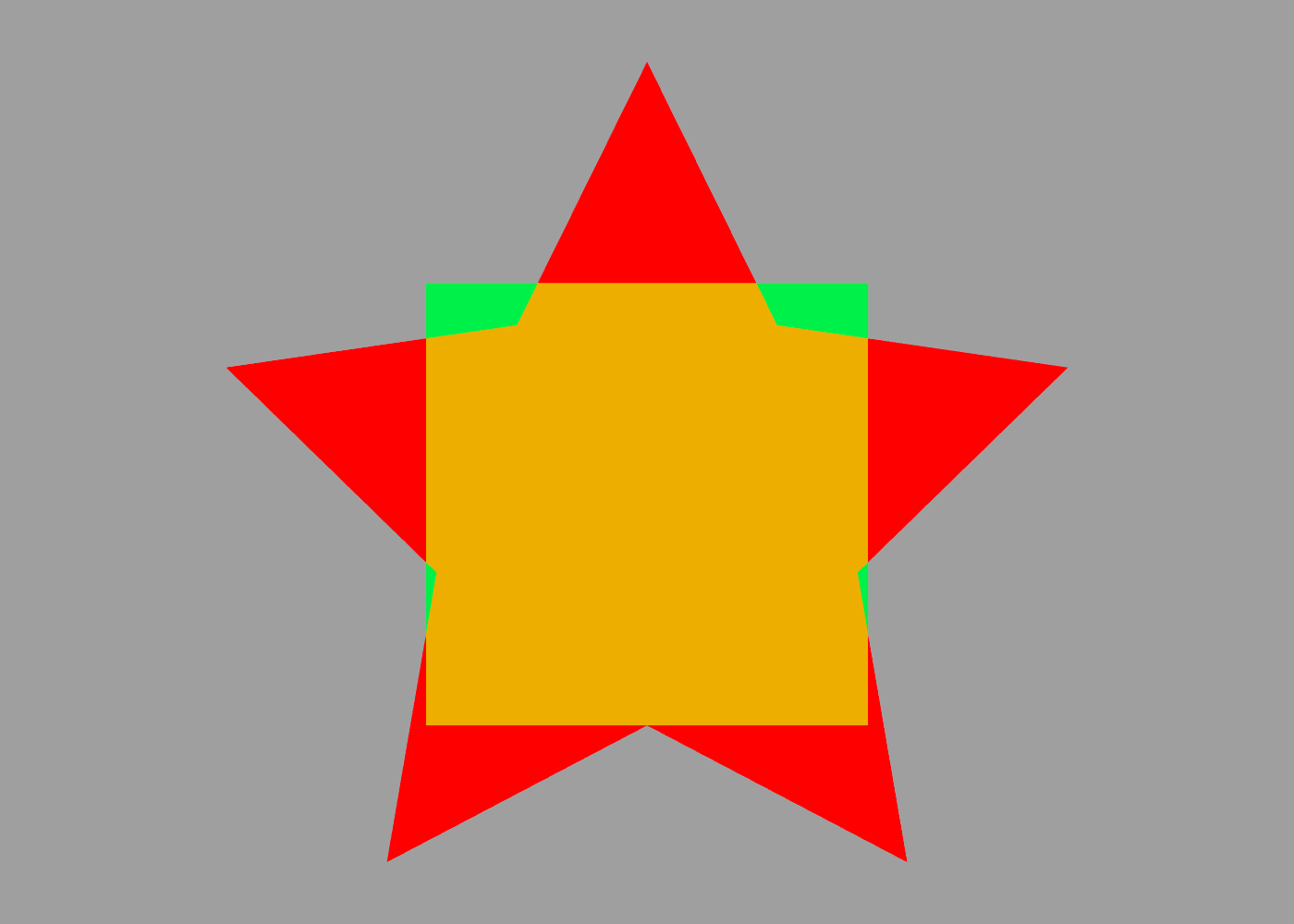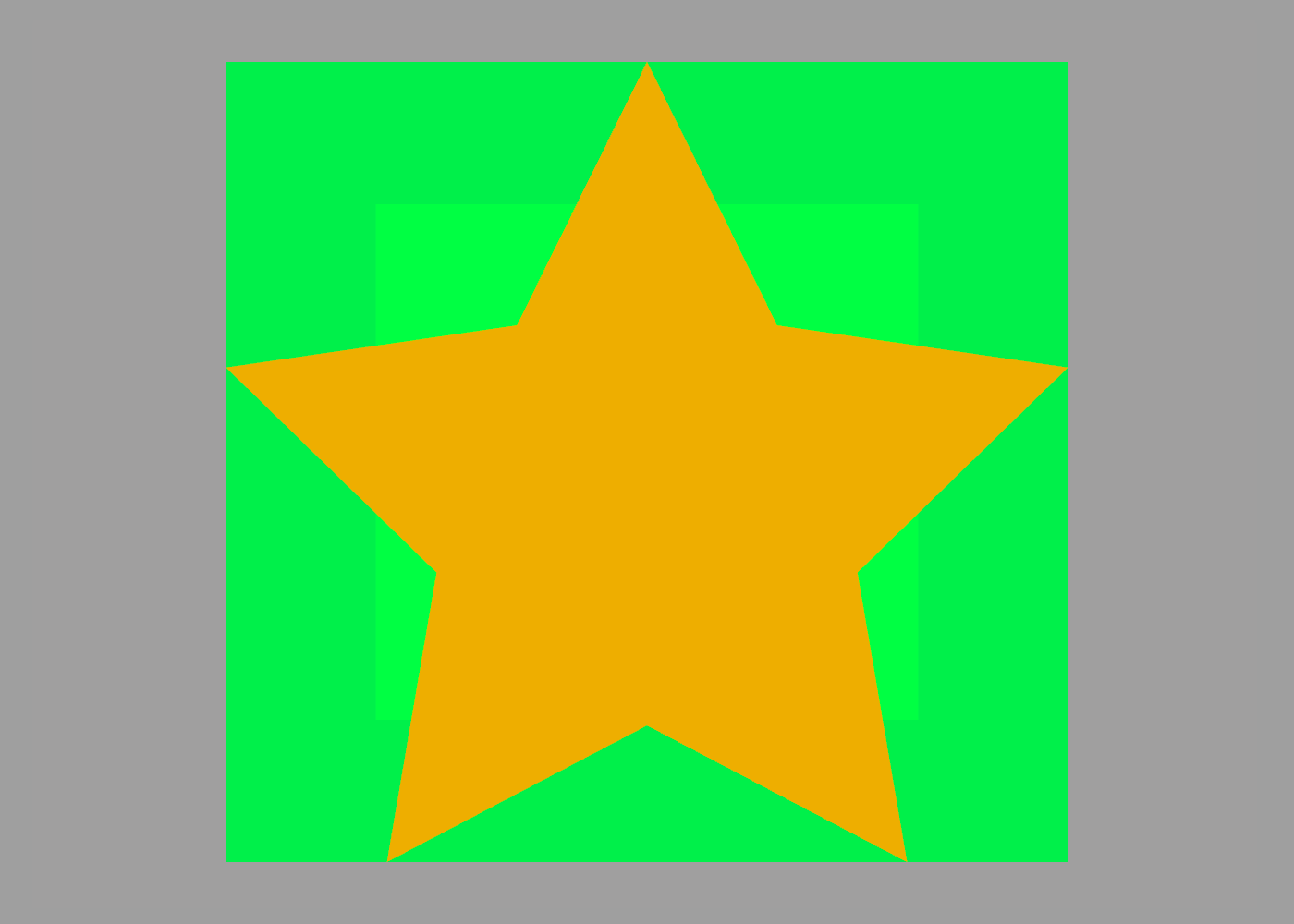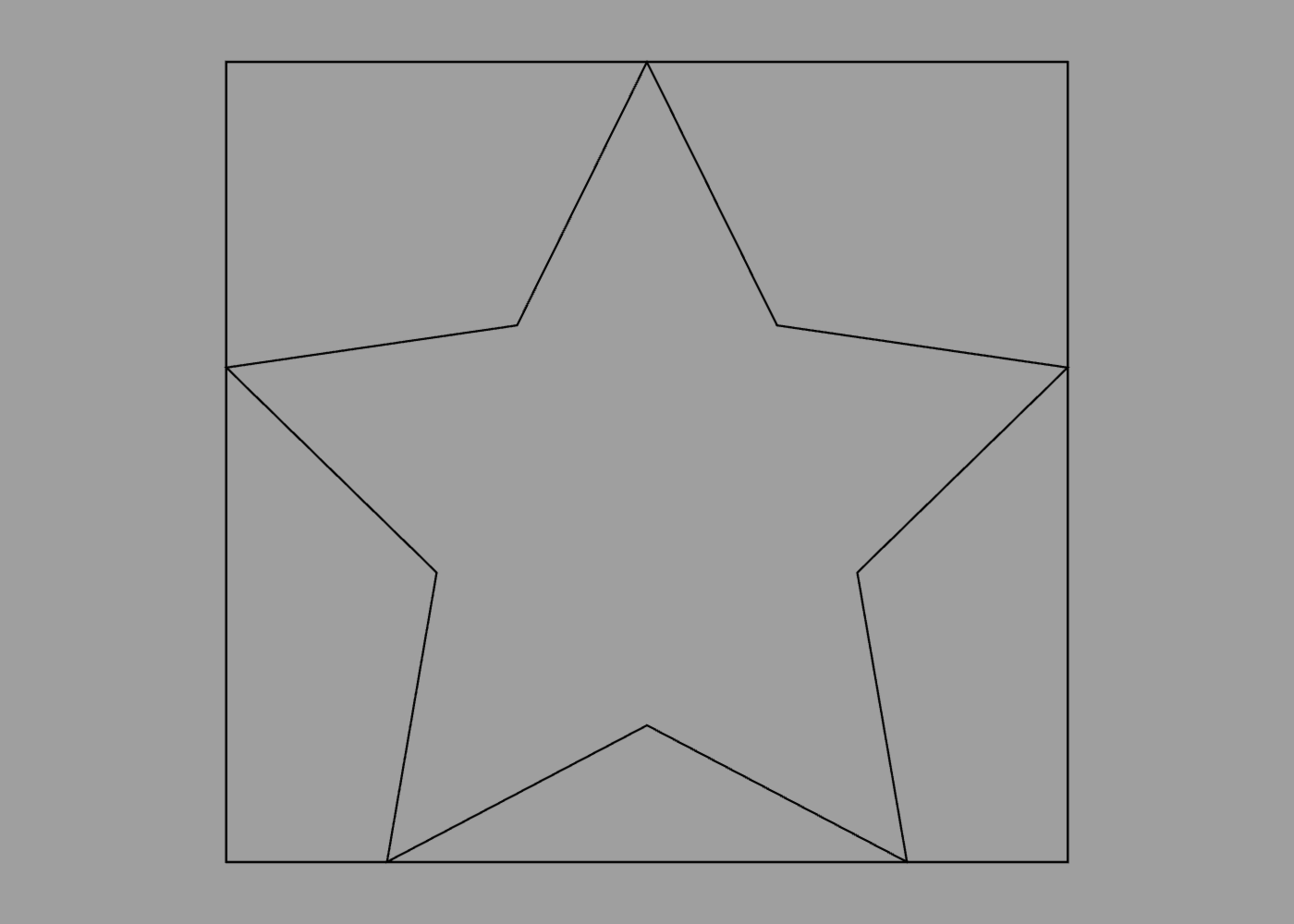ShapeScript
Bounds
ShapeScript’s size ands scale commands let you control the relative size of a shape, but sometimes it’s useful to know the exact dimensions.
A cube of size 1 has an easily-predicted size of one world unit square, but what about a more complex shape, such as a 5-pointed star (see the procedural paths and blocks sections for details):
define star path {
for 1 to 5 {
point 0 -0.5
rotate 1 / 5
point 0 -1
rotate 1 / 5
}
point 0 -0.5
}
// draw star
extrude {
color red
star
}
// draw cube
cube {
color green 0.5
}

We can see that the star is larger than the unit cube, but other than trial-and-error or complex math, how can we get the exact size? This is where the bounds member property comes in.
Mesh Bounds
Paths and meshes both expose a bounds property that represents a bounding box around the shape. From this you can get the exact size and position needed to place a box around the star:
define star {
...
}
// define star shape
define shape extrude {
color red
star
}
// draw star
shape
// draw box around star
cube {
color green 0.5
position shape.bounds.center
size shape.bounds.size
}

Path Bounds
In the example above we computed the bounds of a solid mesh (an extruded star-shaped path) but you can also get the bounds of a path directly. The following code draws the star path inside its bounding rectangle:
define star {
...
}
// draw star
star
// draw rectangle around star
square {
position shape.bounds.center
size shape.bounds.size
}

Bounds Members
The bounds member property has the following sub-properties that you can use:
min- The position of the corner of the box with the smallest X, Y and Z values relative to the origin.max- The position of the corner of the box with the largest X, Y and Z values relative to the origin.center- The position of the center of the box relative to the origin.size- The size (width, height and depth) of the box in world units.width- The width of the box along the X axis (equivalent tosize.width)height- The height of the box along the Y axis (equivalent tosize.height)depth- The depth of the box along the Z axis (equivalent tosize.depth)
So, for example, to get the height of a shape, you could use:
print someShape.bounds.size.height
or just:
print someShape.bounds.height
And to get the X coordinate of its rightmost edge you could use:
print someShape.bounds.max.x